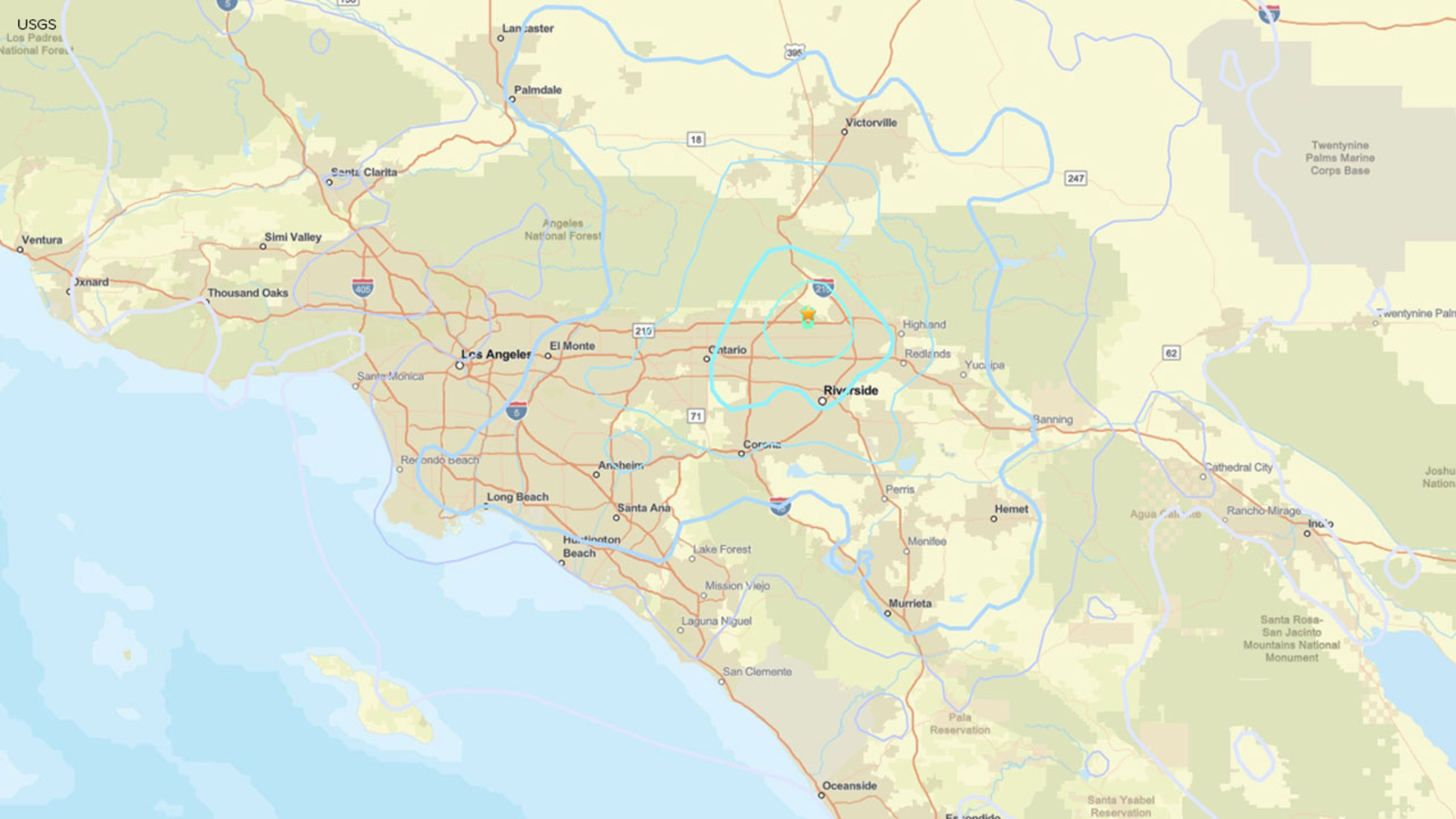What Happened
On July 31, 2025, a 4.3-magnitude earthquake struck near the communities of Fontana and Rialto in California’s Inland Empire region. The U.S. Geological Survey (USGS) reported that the quake occurred at approximately 9:30 a.m. local time, with its epicenter located in Muscoy at a depth of just over three miles. This seismic event was part of a series of tremors that included a smaller 3.1-magnitude aftershock occurring shortly after the main quake. Prior to the 4.3-magnitude quake, two additional minor earthquakes of magnitudes 3.0 and 2.8 were recorded in the Rialto area earlier that morning.
Residents across a broad area of Southern California reported feeling the tremors, with reports coming from locations as distant as Redondo Beach and Garden Grove. Most individuals described the sensation as a sudden jolt or rolling movement. Fortunately, no immediate reports of damage or injuries were noted following the quake.
Key Details
- Magnitude: 4.3
- Location: Near Fontana and Rialto, specifically in Muscoy, San Bernardino County.
- Time: Approximately 9:30 a.m. PDT on July 31, 2025.
- Depth: Just over three miles.
- Aftershocks: A 3.1-magnitude aftershock occurred shortly after the main quake, with earlier tremors recorded at magnitudes 3.0 and 2.8.
- Area Affected: Shaking was felt across Southern California, including Riverside, Los Angeles, Santa Monica, Torrance, Long Beach, and Pasadena.
- Historical Context: The area has experienced similar seismic activity in recent years, with experts noting that it is near significant fault lines, including the San Jacinto and San Andreas faults.
Multiple Perspectives
Seismologists, including Dr. Gabrielle Tepp from Caltech, have indicated that the region is seismically active and has a history of earthquakes of similar magnitudes. According to Dr. Tepp, “This is an active area… where we see seismicity, especially the magnitude 4s.” This perspective underscores the geological characteristics of the region, suggesting that residents should be prepared for potential future seismic events.
Conversely, some residents expressed surprise and concern over the earthquake, particularly those who felt it in high-rise buildings. For instance, individuals in Garden Grove and Irvine reported feeling significant shaking, which led to heightened anxiety about safety and preparedness. The contrasting viewpoints highlight the varying levels of awareness and preparedness among the population regarding earthquake risks.
Context & Background
California is known for its seismic activity due to its location along the Pacific Ring of Fire, where multiple tectonic plates converge. The San Andreas Fault, one of the most well-known fault lines, runs through California and is responsible for many significant earthquakes in the state’s history. The region around Fontana and Rialto has seen a series of earthquakes over the years, with approximately 130 quakes of magnitude 3.0 or greater recorded since 1990, and eight quakes of magnitude 4.0 or higher.
The recent earthquake serves as a reminder of the importance of earthquake preparedness in California. Local authorities and organizations often encourage residents to maintain emergency kits and stay informed about earthquake safety protocols. The occurrence of this quake may prompt renewed discussions about preparedness measures among residents and local officials.
What We Don’t Know Yet
While the immediate impact of the earthquake appears to be minimal, ongoing assessments will be necessary to determine if there are any delayed effects, such as structural damage or aftershocks. Additionally, it remains to be seen whether this seismic activity will lead to further quakes in the region, as the geological dynamics can be unpredictable. Experts will likely continue monitoring the area to provide updates and guidance to residents.
Furthermore, the psychological impact on residents who experienced the quake, particularly those in high-rise buildings or unfamiliar with seismic events, is yet to be fully understood. As communities process the event, discussions around mental health support and community resilience may emerge.
In summary, the 4.3-magnitude earthquake near Fontana and Rialto is a significant event in the context of California’s ongoing seismic activity. It highlights the need for preparedness and awareness among residents living in earthquake-prone areas.


